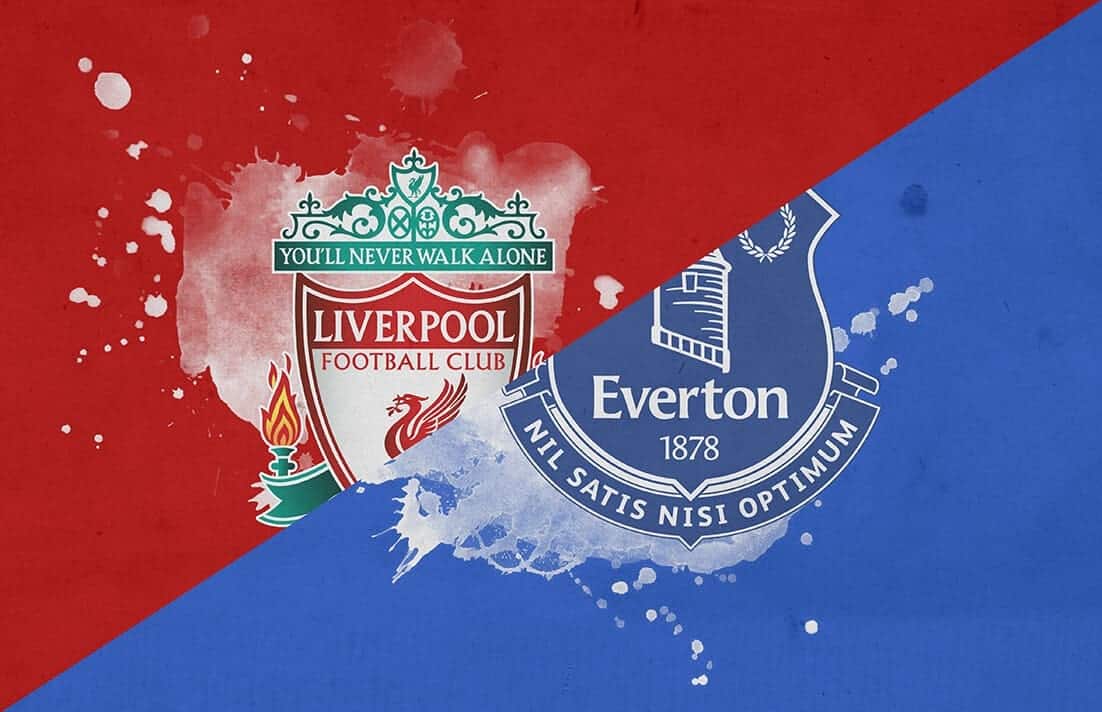The 232nd edition of the Merseyside Derby saw two of the more in-form clubs in the Premier League play out an energetic if not chaotic match. Marco Silva has Everton threatening the top six in the Premier League with proactive, balanced football. Jurgen Klopp and Liverpool had just come off a frustrating Champions League loss to Paris Saint-Germain. The Reds looked to regain the momentum of an unbeaten league start and what better way to do so than with a win against your domestic rival in your own home?
Lineups
Klopp has used two notable formations this season: the archetypal 4-3-3 Liverpool have utilised in years past, and the newer 4-2-3-1, something the German has slowly been more comfortable applying with the expanded midfield personnel. This specific 4-2-3-1 saw one of the two deeper central midfielders- more often Gini Wijnaldum- push forward into a 4-1-4-1 (this also is an example of how formations are mostly coached foundations, freer-flowing than they look).
Everton deployed a similar formation, albeit more of a 4-4-1-1 with the wide attackers staying back further to maintain structured defending.
The Potential and Pitfalls of Pressing
In the beginning, it was clear Marco Silva wanted his team to press. When Liverpool’s centre backs or deep midfielders were in possession, Everton’s attackers Richarlison and Gylfi Sigurdsson pushed forward in a front-two press in attempts to block outlets and intercept the ball with open space in front of them.

This early tactic also meant a positioning further up the pitch for midfielders Andre Gomes and Idrissa Gueye, which in turn left pockets of space around Everton’s back four to exploit. Liverpool did a good job resisting the press through Fabinho and via outlets in the wide areas.


Everton’s bold attempts to attack Liverpool in a direct approach often left the Toffees exposed at the back. Liverpool chose to counter-attack and get into said space using long balls from the full backs to the wide attackers, usually, Mohamed Salah or Sadio Mane, running behind Everton’s back line, often just barely failing to connect.
On the other side of the ball, Everton’s possession often began through building up from the back. This failed in the long run as well, as Liverpool’s own press was able to stop attacks in the opposing half.


Eventually, all this exposure at the back forced Everton to abandon the press. They resorted to focusing on defending their own box in a deeper block, which proved difficult for Liverpool to penetrate.
Poor Progression and Finishing
Throughout the match, Liverpool had scoring opportunities halted by Everton’s stiff defending. The finishing of the front four was less than stellar, though I also question the method of progression down the pitch. Liverpool’s insistence on using long balls to progress in this match was a bit disappointing. I would like to see Klopp place some trust in Fabinho and Keita and start them together. Those two midfielders were bought by the club to help carry the ball from the defence to the attack, and Fabinho passing the ball forward into space for Keita to dribble into sounds almost too logical.


Conclusion
After looking at the match through a more careful tactical lens, my view is that this was far more one-sided compared to my initial reaction when I watched the match live. Both Liverpool’s press and press-resistance not only staved off Everton’s daring approach against an effective counter-attacking side but also created opportunities for the attack that simply failed to produce due to either near-missed connections or questionable finishing.
In the end, the aberrant blunder by Jordan Pickford and goal by Divock Origi is a reminder that sometimes the idea of knocking the ball forward often enough can be the straw that breaks the camel’s back. One mishap can be the difference between a loss and a point added on the table(as was the case here for Everton). While Liverpool maintain their unbeaten league record and chase Manchester City at the top of the table, Marco Silva and Everton fans should be proud of the way their team played, though a change in tactics for them might be necessary when these clubs meet at Goodison Park in March. Liverpool meanwhile saw the most promising performance from Fabinho yet, and when Klopp eventually plays the Brazilian and the Guinean together, the midfield may finally lose the ‘weak spot’ tag in this dominant XI.
If you love tactical analysis, then you’ll love the new magazine from totalfootballanalysis.com – 118 pages of pure tactical analysis covering topics from the Premier League, Serie A, La Liga, Bundesliga and many, many more. Get your copy today for just £4.99 here!




Comments